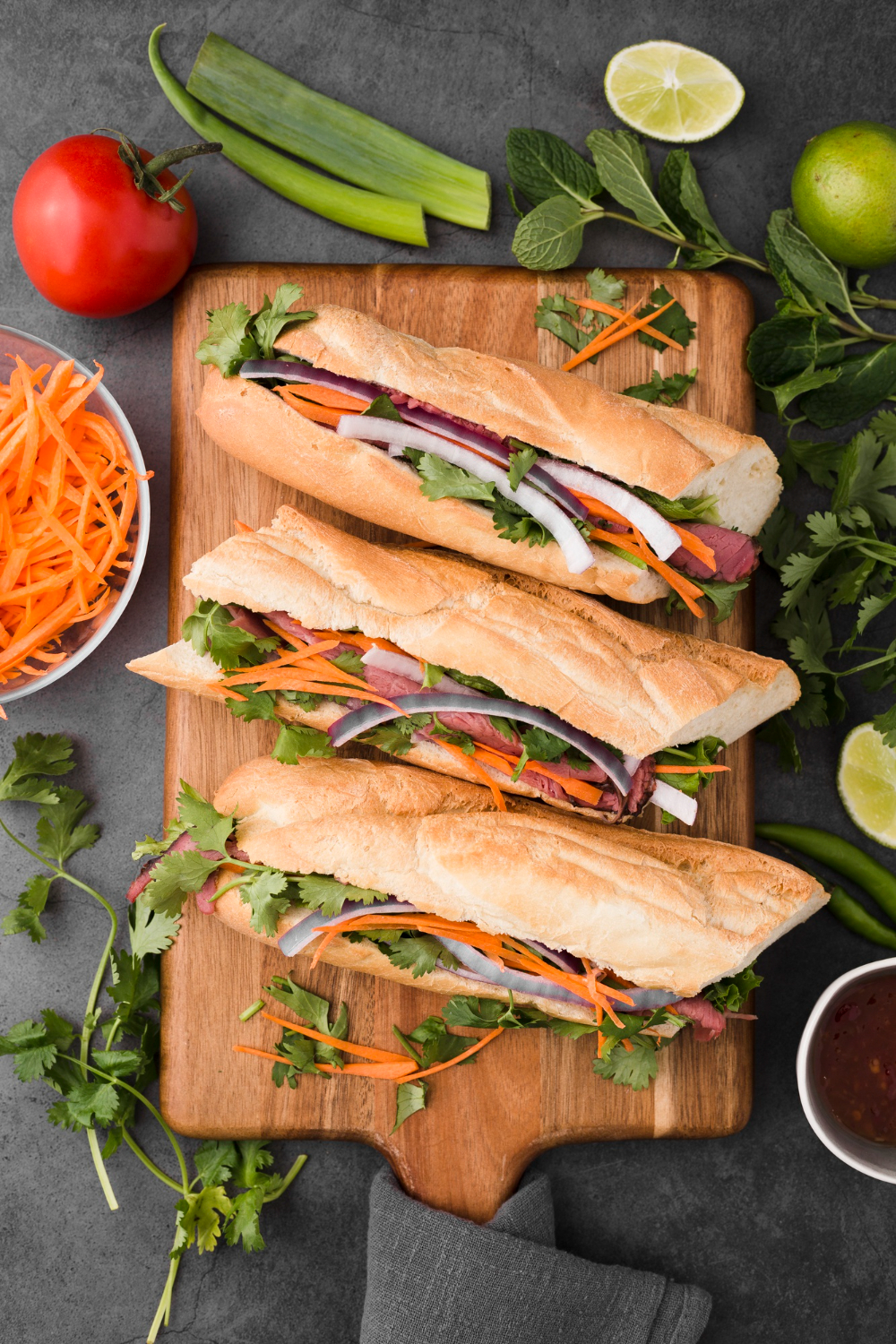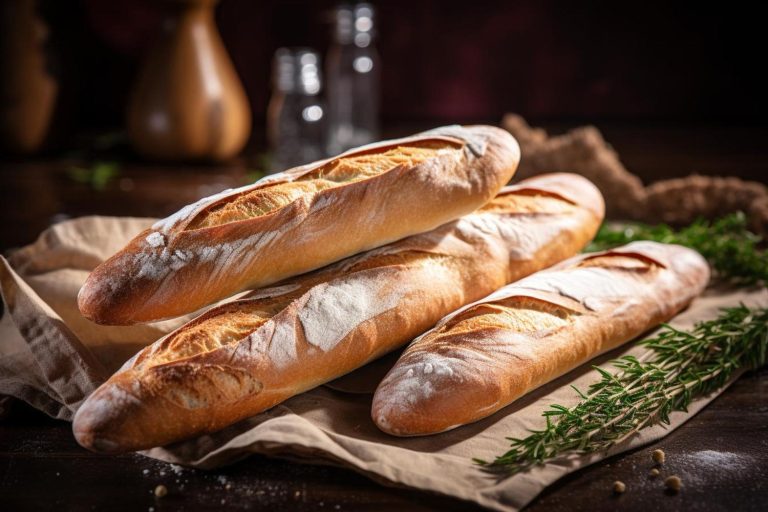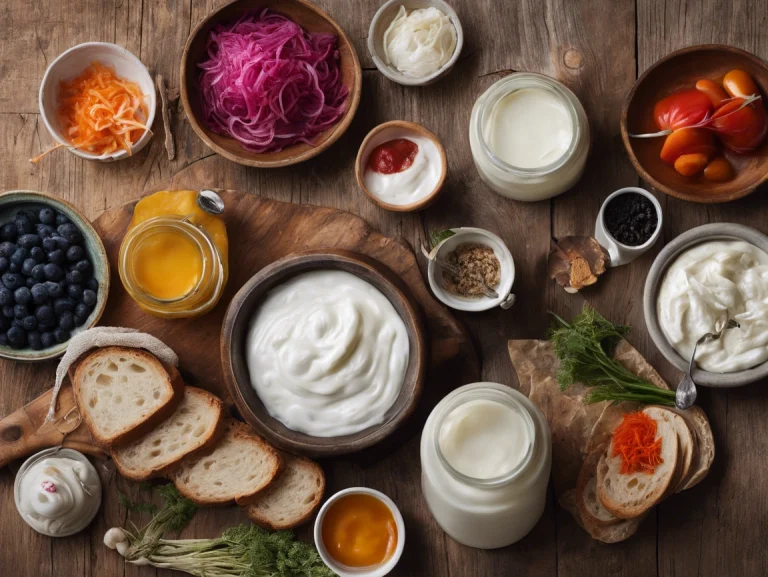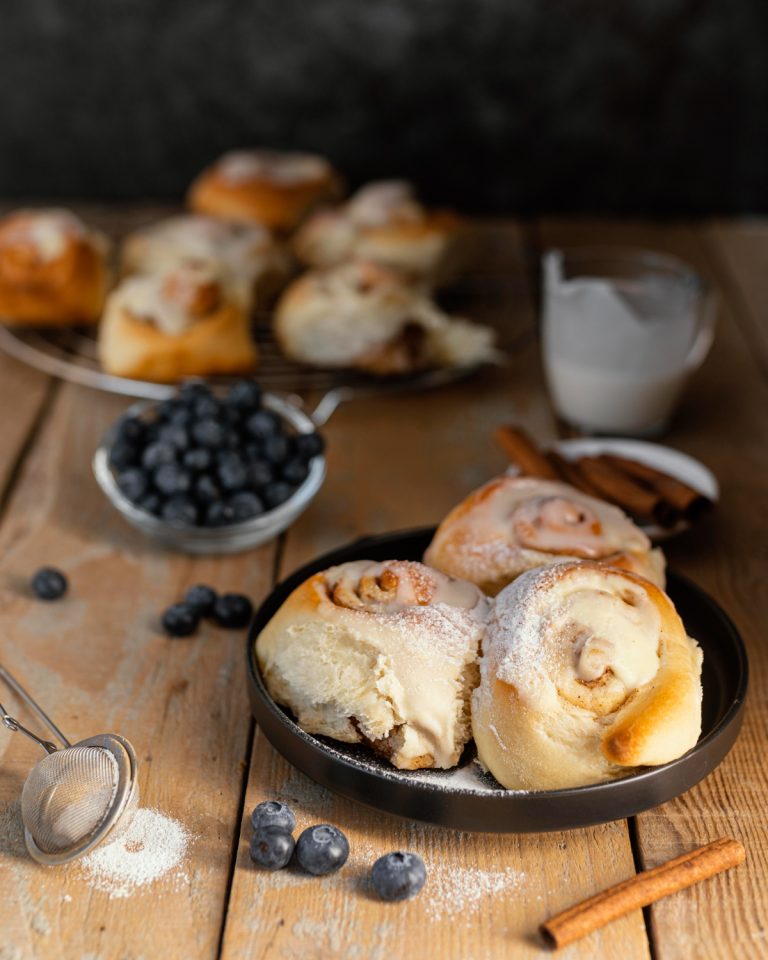Quick and Easy: Master the Sourdough Banh Mi Recipe at Home
CNN ranked Banh Mi as one of the world’s best street foods. Many people think this Vietnamese-French fusion creation is too complex to make at home.
We thought the same until we found a remarkable sourdough banh mi recipe that changed everything. This recipe stands out from others. It offers a simple way to achieve the crispy exterior and soft, chewy interior of an authentic Vietnamese baguette in your kitchen.
You don’t need fancy equipment or years of baking experience to succeed. Our step-by-step guide will help you quickly become skilled at this Vietnamese baguette recipe, whether you’re an experienced baker or new to sourdough.
Ready to create bakery-worthy banh mi at home? Let’s get baking!
Essential Equipment and Ingredients
Let’s gather everything we need to create our sourdough banh mi. Our experience with this Vietnamese baguette recipe shows that success comes from having the right tools and ingredients ready at the start.
Essential Tools Every Baker Needs
Your sourdough banh mi recipe requires these tools:
- A digital scale for precise measurements
- A stand mixer with a dough hook attachment
- A perforated baguette pan for that perfect shape
- A spray bottle for creating steam
- A bread lame or sharp razor for scoring
- A reliable thermometer for monitoring temperatures
Sourdough Starter Preparation
A healthy starter is vital for perfect banh mi bread. Your starter needs regular feeding with equal parts flour and water by weight. The ideal temperature range is 75-85°F (24-29°C) to maintain optimal activity. Your starter is ready when it’s bubbly and active with a pleasant, fruity aroma.
Ingredient Substitutions and Alternatives
We want to create authentic Vietnamese baguettes, but some ingredients might not be accessible to everyone. Here’s our ingredient list with possible substitutions:
High-protein bread flour (11-12% protein content) works best. All-purpose flour can be an alternative, though the texture will differ slightly. Regular granulated sugar works perfectly so that you won’t need specialty sweeteners.
Room-temperature water is essential, and filtered water gives the best results. Tap water works well, too. Unsalted butter produces the best outcome, but margarine can be substituted. The flavor of your banh mi bread will be slightly different.
Note that each ingredient helps create that signature crispy crust and soft, chewy interior that makes Vietnamese baguettes unique. Becoming skilled at this recipe means understanding how these elements work together.
Quick Sourdough Mixing Method
The ingredients are ready, so let’s head to the mixing process that makes our sourdough banh mi recipe unique. We’ve created a method that saves time without sacrificing quality.
Time-Saving Mixing Techniques
Our Vietnamese baguette recipe’s success depends on the autolyze technique. Here’s how we’ve optimized the process:
- Combine flour and water (except 50g reserved water)
- Let rest for 30 minutes
- Add mature starter and mix gently
- Incorporate salt with the remaining water
- Perform the stretch-and-fold technique every 30 minutes
Optimal Dough Temperature
Temperature control is a vital part of our sourdough banh mi bread. The dough temperature should stay between 75-78°F (24-25°C). You can maintain this by:
- Using water at 80-85°F to achieve optimal enzyme activity
- Keeping an eye on room temperature during mixing
- Adjusting water temperature based on your kitchen’s conditions
Visual Cues for Perfect Consistency
Our experience with countless Vietnamese baguette recipes shows that achieving consistency makes all the difference. Your dough should have these characteristics:
- Texture: Firm but tacky to touch
- Elasticity: Stretches without tearing
- Surface: Smooth with a slight shine
- Structure: Holds shape when pulled
The windowpane test helps check gluten development. The dough should stretch thin enough that light passes through without tearing. If it’s not quite there yet, give it another round of gentle stretching and folding.
Note that our dough’s consistency might feel slightly wetter than traditional French baguette dough. This vital feature creates the signature banh mi’s crispy crust and tender crumb.
Streamlined Shaping Process
The sourdough banh mi recipe reaches its peak during the shaping process. Our experience with hundreds of Vietnamese baguettes has led us to develop an efficient approach that blends traditional methods with modern techniques.
Easy Rolling Technique
The process begins with our properly fermented dough from the previous step. This quickest way to shape the dough includes:
- Divide dough into six equal portions (use a scale for precision)
- Form each portion into a ball and rest for 10 minutes
- Flatten each piece into a thin oval (approximately 5×10 inches)
- Roll tightly into a long oval, pinching sides as you go
- Seal the seams along the length of the dough
Creating the Signature Crust
Proper steam creation is vital in achieving that classic Vietnamese baguette crust. The moisture control process includes:
- Spray the shaped loaves with water
- Place a tray of boiling water in the oven
- Maintain oven temperature at 480°F
- Create additional steam by spraying water during baking
Scoring Patterns for Success
Scoring provides both function and artistry, giving our banh mi its distinctive appearance. The perfect score requires cuts about 1/4 inch deep for decorative patterns and 1/2 inch deep for expansion scores.
The lame should be held at a 45-degree angle during scoring. This technique creates beautiful “ears” – a hallmark of professional Vietnamese baguettes. A single long score along the dough’s length works best for banh mi, though diagonal cuts can create a more traditional French appearance.
The scoring must happen right before the loaves enter the oven. This timing is significant to achieving that perfect rise and crack in the crust—a distinctive feature of Vietnamese baguettes. Dipping the blade in water or oil creates cleaner cuts and prevents the dough from sticking effectively.
Fast-Track Baking Guide
A perfect bake turns our shaped Vietnamese baguettes into golden masterpieces with their signature crispy crust. We tested countless trials to perfect our baking technique, and now we share our foolproof method that delivers fantastic results consistently.
Steam Oven Setup
The right steamy environment is vital to our sourdough banh mi recipe. A cast-iron pan filled with lava rocks sits at the bottom of our oven. The bread goes in right after we pour 3 cups of boiling water into the pan to create an intense steam burst. A heavy-duty baking pan works well, too, if you don’t have lava rocks.
Temperature Control Tips
Your perfect Vietnamese baguette depends on proper temperature management. Here’s our proven process:
- Preheat oven to 480°F (250°C) for 30 minutes
- Reduce to 400°F (200°C) after loading bread
- Maintain steam for first 13-15 minutes
- Remove the steam pan and continue baking for 4-5 minutes
- Flip loaves for even browning in the final minutes
Pro tip: The banh mi bread could collapse if you open the oven door for 13 minutes, so keep it closed.
Signs of Perfect Doneness
Our experience with baking Vietnamese baguettes over the last several years has taught us these reliable indicators of doneness:
- Internal temperature reaches 190-210°F (88-99°C)
- The crust shows a golden-brown color with blisters
- The bread feels light when lifted
- You hear a hollow sound when tapped on the bottom
- The crust crackles and “sings” for the first 10 minutes after removal
You should hear that satisfying crackling sound as the crust develops its signature cracks within 5 minutes of taking your banh mi out of the oven. This sound signals the perfect balance between a crispy exterior and a soft, chewy interior, making Vietnamese baguettes unique.
Note that a perfect loaf should spring back slowly and leave a slight indentation. If your bread bounces back quickly when pressed, it needs more time in the oven.
Conclusion
Our sourdough banh mi recipe shows you how to make authentic Vietnamese baguettes at home. The process is more straightforward than you might think. We break down each vital step – from equipment setup and ingredient selection to mixing, shaping, and baking techniques that create the signature crispy crust and soft interior.
The magic happens in the details. Precise temperature control, proper steam creation, and perfect scoring patterns produce bakery-worthy results. Our efficient process keeps the authentic characteristics of banh mi while removing unnecessary steps.
Are you ready to start your sourdough experience? The Yeast We Can Do offers an authentic artisanal sourdough starter that will raise your bread and pizza-making skills. Our small-batch starter helps home bakers and restaurant owners create exceptional bread and pizza with the perfect tangy flavor and signature crust. You can change your baking results today—contact john@theyeastwecando.comto get our premium sourdough starter.
Note that sourdough baking improves with practice. Each batch brings new insights that help you become skilled at these techniques. Our recipe and guidance will help you create Vietnamese baguettes that rival your favorite banh mi shop.
FAQs
What is the typical shelf life of homemade sourdough sandwich bread?
When adequately wrapped and stored, homemade sourdough bread remains fresh for about 3 to 5 days. However, for optimal taste and texture, including a crispy crust and a soft, airy interior, it is best consumed within the first 24 hours.
What type of bread is traditionally used for banh mi?
Banh mi is typically made with a type of Vietnamese baguette that features a thin, crisp crust and a soft, airy texture, distinguishing it from other types of bread.
Why does the preparation of sourdough bread take a considerable amount of time?
Sourdough bread requires more preparation because it depends on yeast and fermentation processes. Unlike regular yeast bread, which can be prepared in a few hours, sourdough needs additional time to ferment.
What are some practical tips for making excellent sourdough bread?
To enhance your sourdough bread, consider these tips: use your sourdough starter when it’s most active, moisten the dough surface before baking to help it rise, handle the dough gently, use sifted flour for a less dense bread, pre-soak your flour for a lighter loaf, and simply adding water can make the sourdough softer.
How can I achieve the perfect banh mi baguette at home?
For a homemade banh mi baguette with the characteristic flaky crust and pillowy interior, rice flour or ascorbic acid (Vitamin C) is often suggested. However, the acidic environment created by sourdough may also influence the texture and flavor. Experimenting with these ingredients or techniques could help replicate the authentic banh mi baguette.






